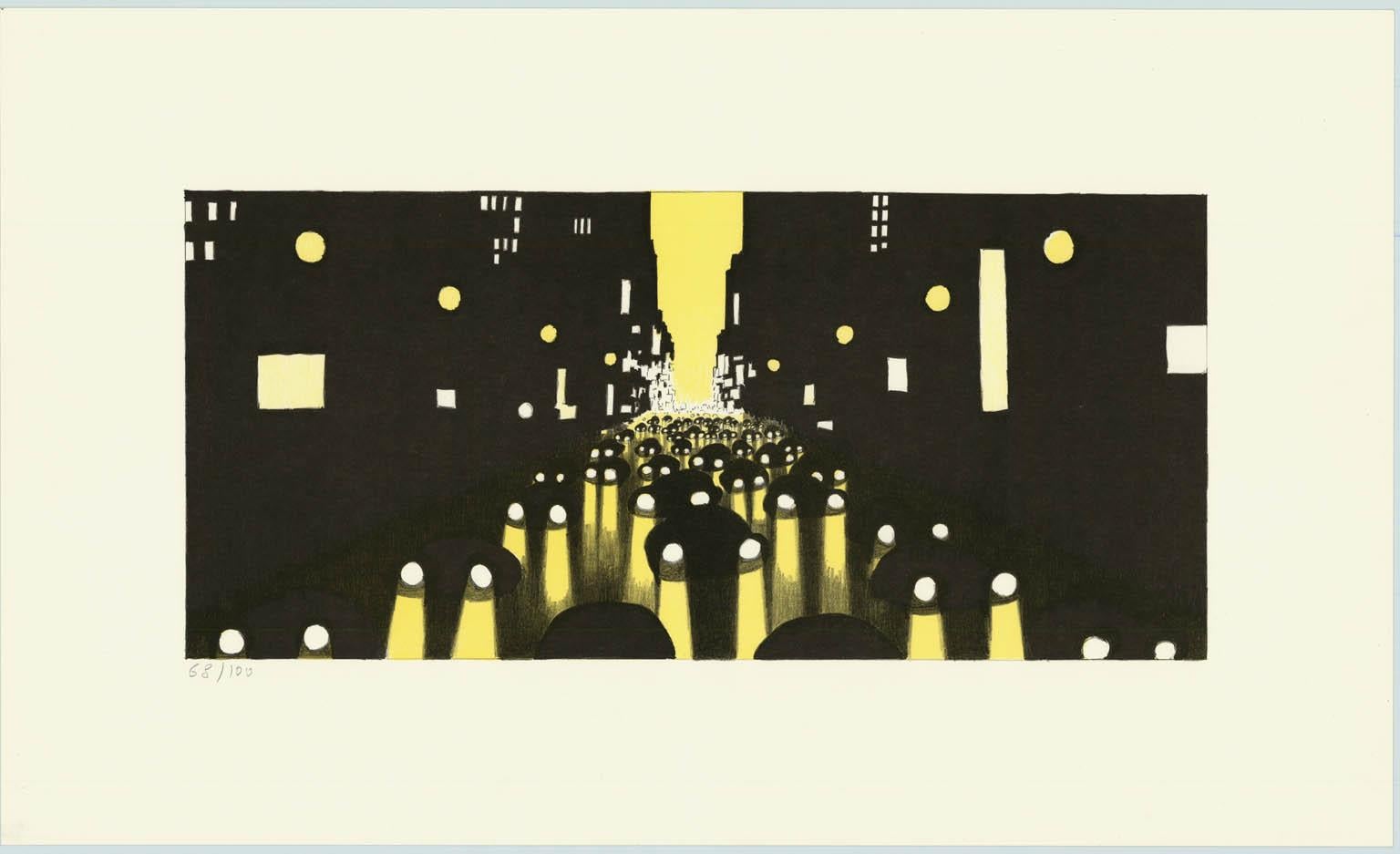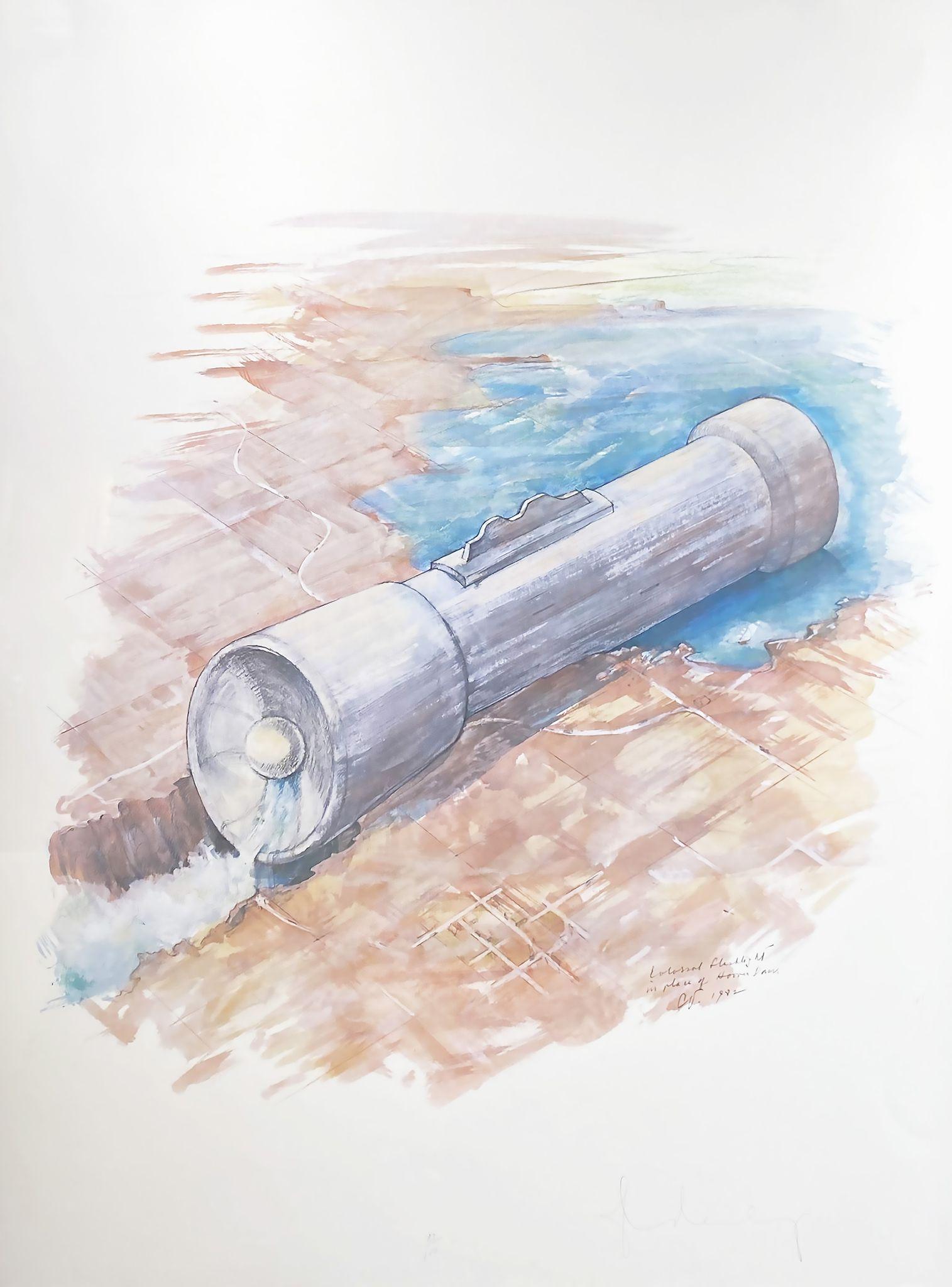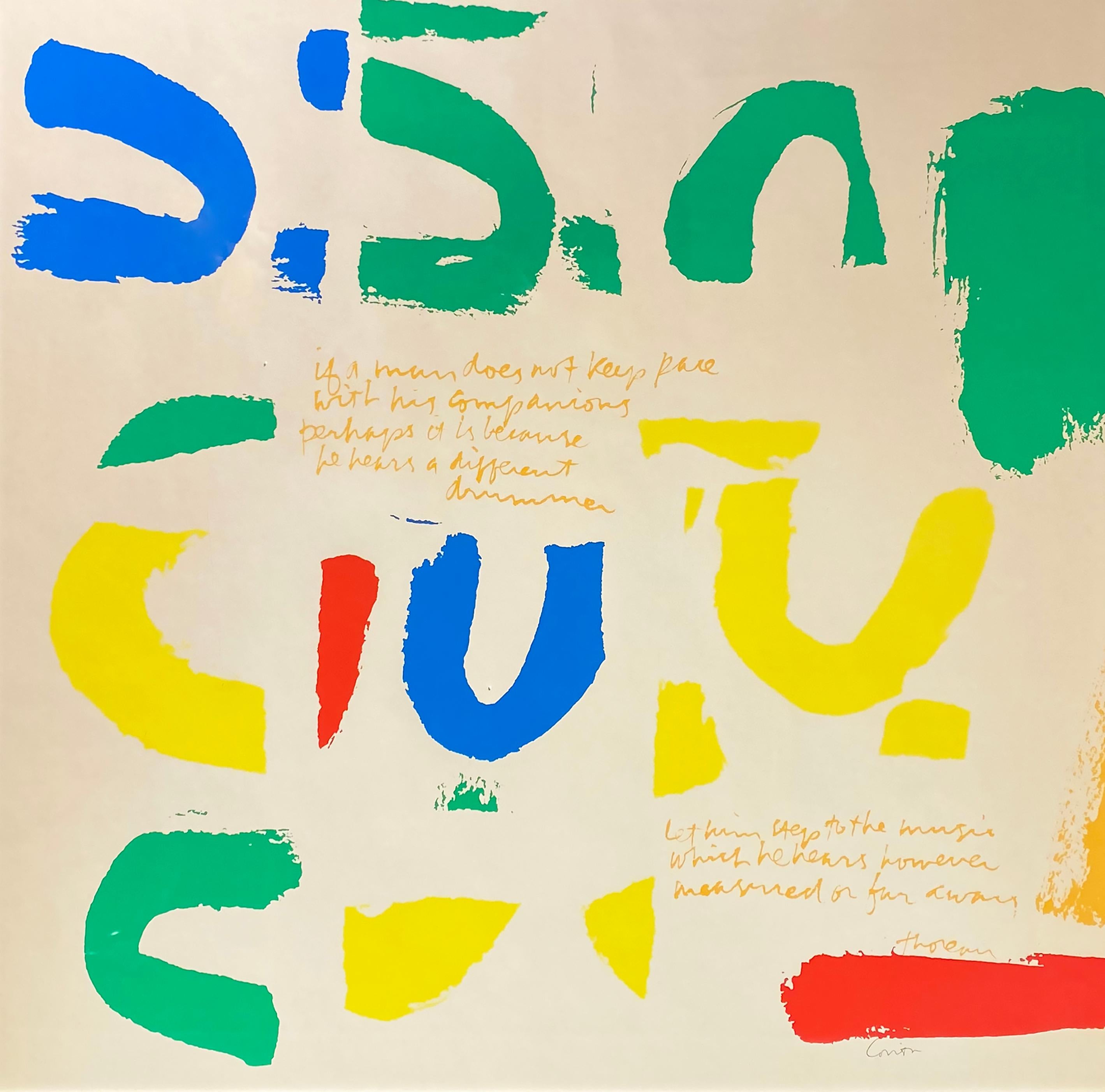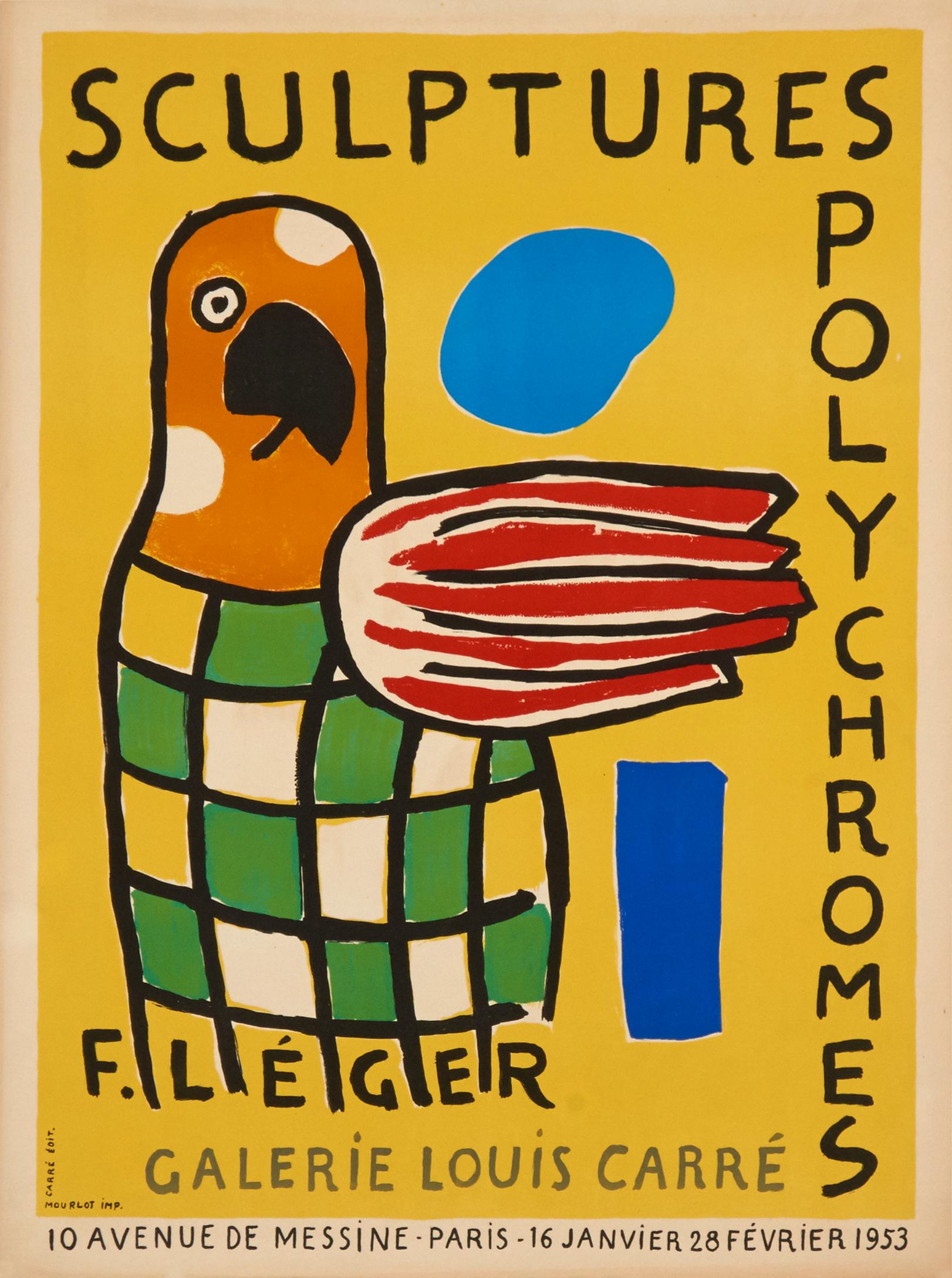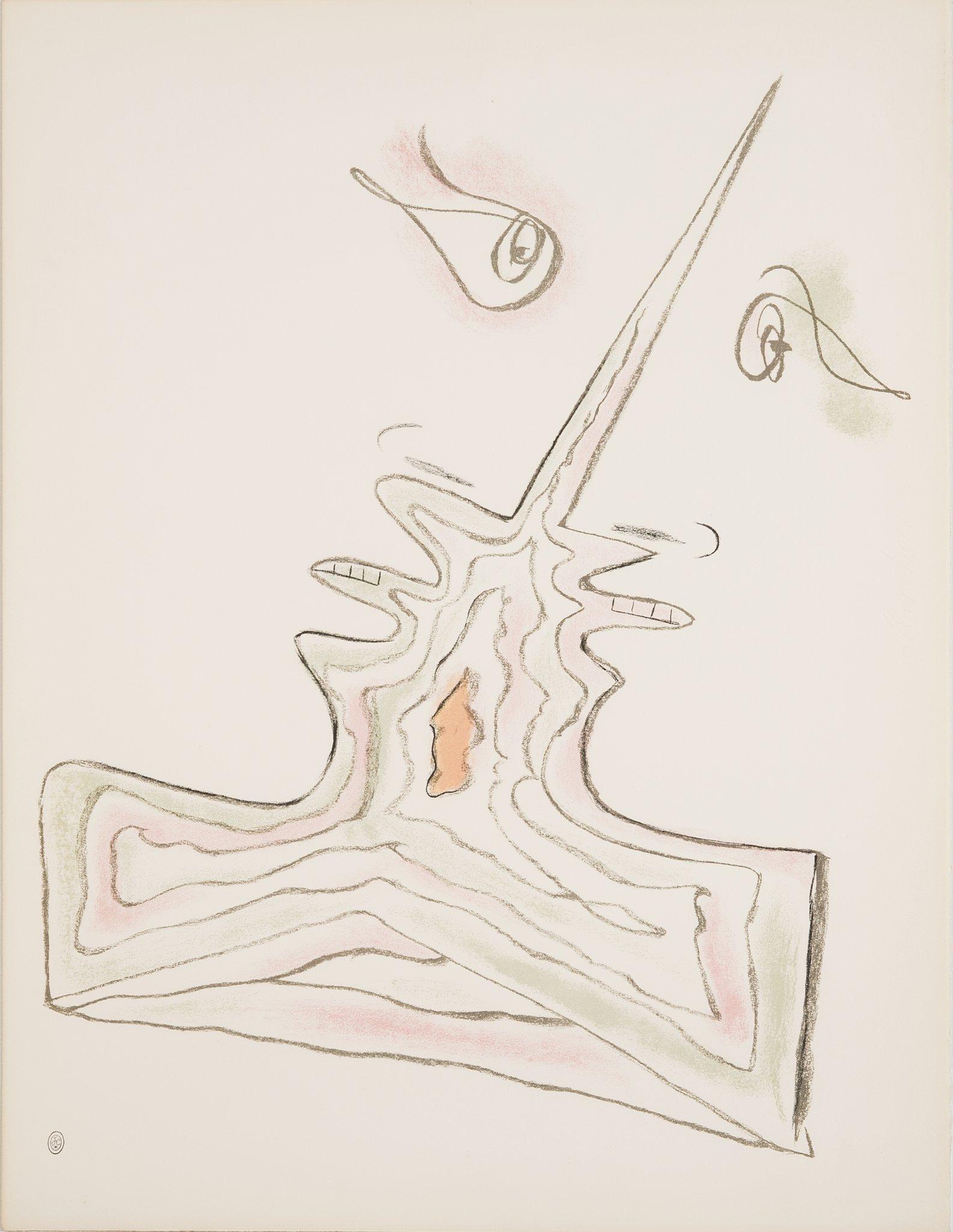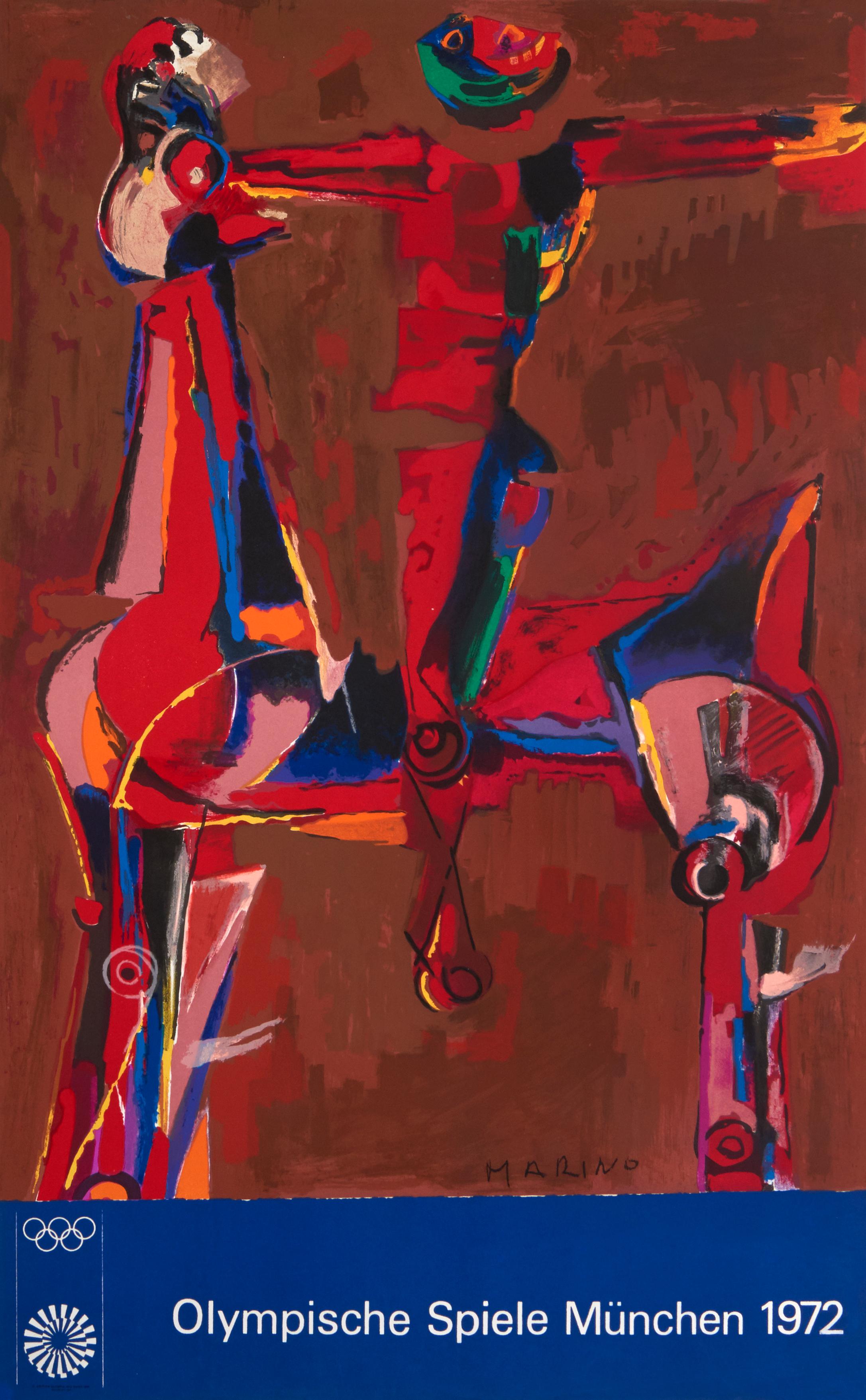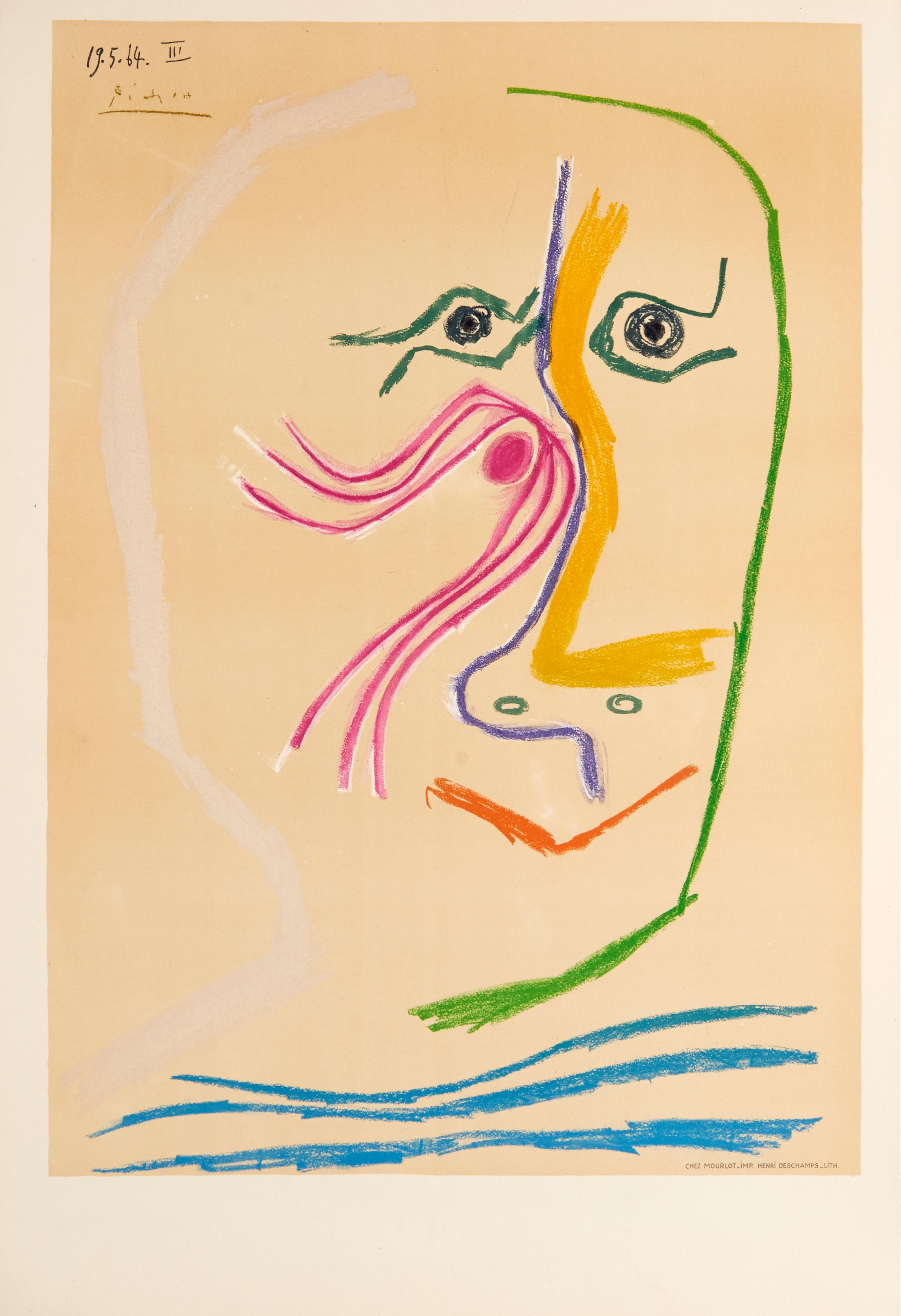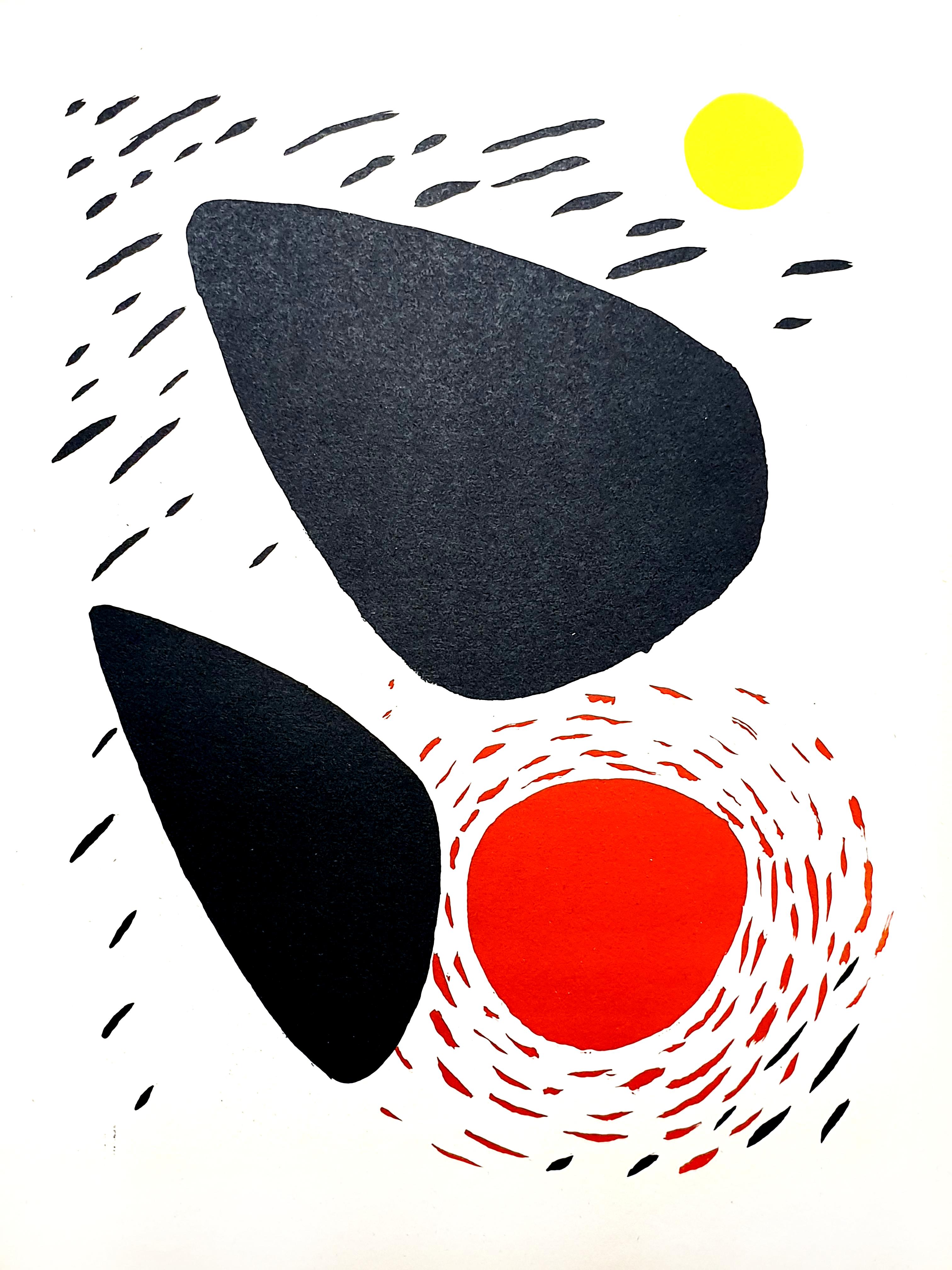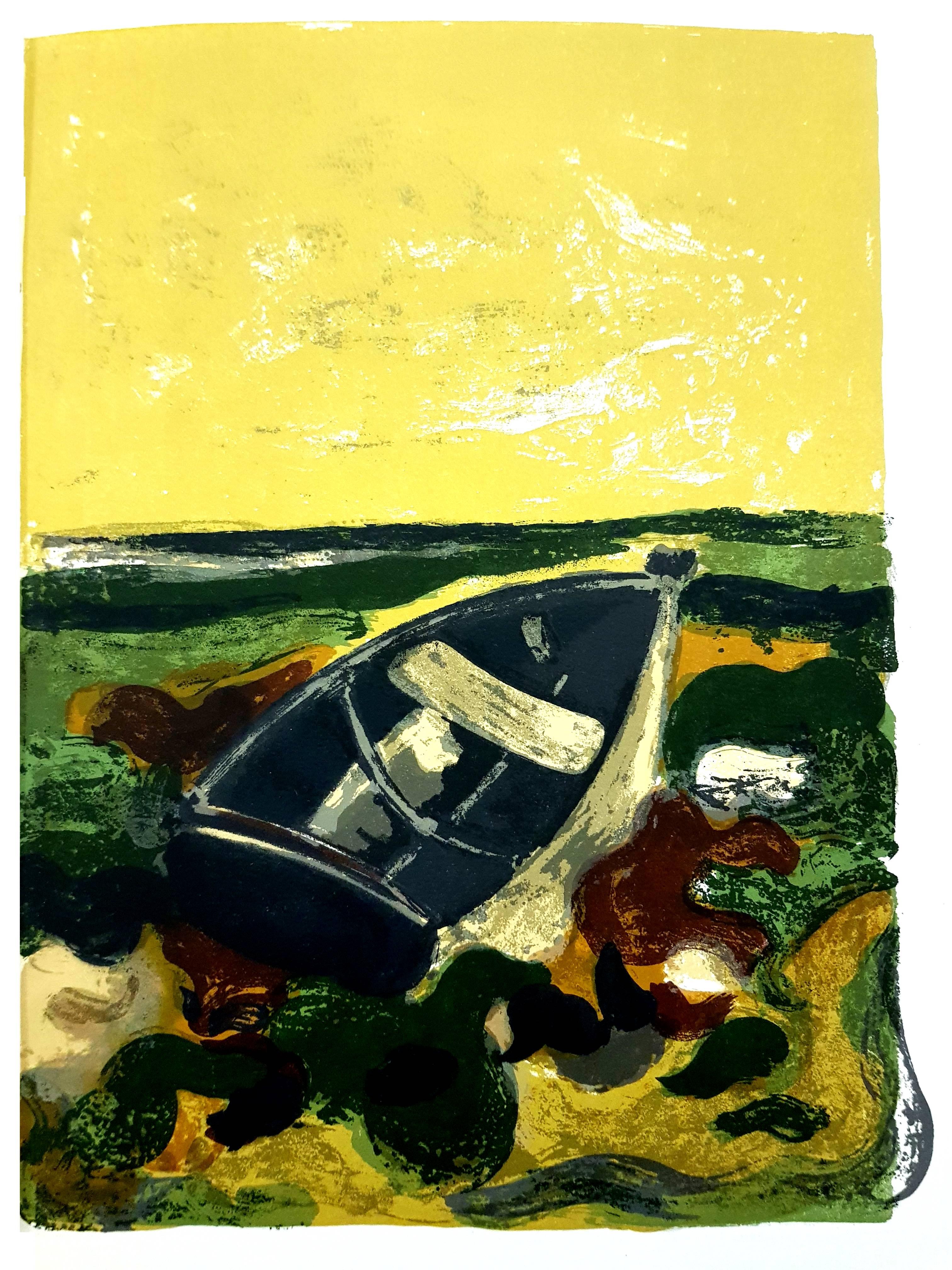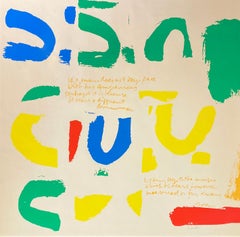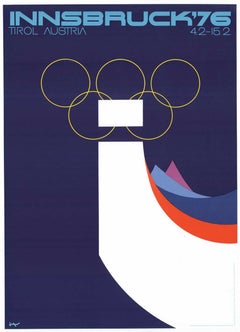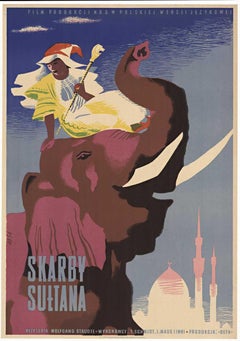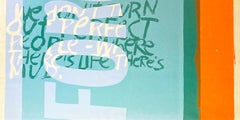
We Don't Turn Out Perfect
View Similar Items
Corita KentWe Don't Turn Out Perfect
About the Item
- Creator:Corita Kent (1918 - 1986, American)
- Dimensions:Height: 14.5 in (36.83 cm)Diameter: 29.75 in (75.57 cm)
- Medium:
- Movement & Style:
- Period:
- Condition:
- Gallery Location:Missouri, MO
- Reference Number:1stDibs: LU747314094802
Corita Kent
Sister Mary Corita Kent, once the nation's best known nun, won fame as a serigraph artist. Her bright, colorful silkscreen prints were the rage of the 1960s. She designed the first "Love" U.S. postage stamp.
Mary Corita Kent was born in Fort Dodge, Iowa in 1918, then moved with her family to Vancouver, British Columbia, in 1920. Two years later they moved to Los Angeles, where she grew up. Kent joined the Sisters of the Immaculate Heart of Mary there in 1938. She received her bachelor's degree from Immaculate Heart College in 1941, followed by a master's in art history 10 years later from the University of Southern California.
Popularly known as "Sister Mary Corita," the artist turned to the silkscreen process in 1950. Her large compositions combine quotations, often from the Bible or modern poetry, with religious or secular images. She achieved fame in the early 1960s with her brightly colored silkscreen posters. Some of her work includes excerpts from the writings of Carl Jung, e.e. cummings and Rainer Maria Rilke. She began adding words to her designs because, she said, "I have been nuts about words and their shape since I was very young."
Perhaps becoming a celebrity came too soon for the nun. It was something she never asked to be, but she carried the burdens of stardom with grace, kindness, and loving warmth. She never was arrogant, and accepted the status because she believed it would help the College of the Immaculate Heart — where she was teaching — and she thought it would be good for her community of Sisters of the Immaculate Heart of Mary. Sister Corita became a symbol of the modern nun and was often the target of conservative Catholics, particularly when she turned to regular street dress in 1967.
After more than 30 years as a nun, Kent returned to private life in December 1968, moving to Boston to devote herself to her art, and opening a gallery. For the next 18 years, Kent created over 50 commissions, in addition to over 400 new editions of serigraphs. Special projects included the landmark 150-foot rainbow painting on the Boston Gas Company's natural gas tank, numerous murals, billboards, book covers and book illustrations, logos, greeting cards and more. She also created complete editions of serigraphs for fundraising use by numerous organizations dedicated to peace and social justice. She won dozens of art prizes and saw her work hung in many of the world's major art museums. Critics praised her prints as joyful, exuberant, bold and radiant.
Around 1977, the artist developed cancer, and although her doctor gave her only six months to live, she knew that she had major art pieces to accomplish before she died — nine years later. Kent passed away in 1986, bequeathing her remaining prints, as well as the copyrights to all her works, to support the good work of the Immaculate Heart Community.
Find original Corita Kent art on 1stDibs.
(Biography provided by Helicline Fine Art)
- Leo Baeck "and a Spirit is Characterized"By Corita KentLocated in Missouri, MOLeo Baeck and a Spirit is Characterized Sister Mary Corita Kent (American, 1918-1986) Signed Lower Right in Pencil Edition of 250 Lower center 21.5 x 21.5 inches 24 x 24 inches frame...Category
20th Century American Modern Abstract Prints
MaterialsColor, Lithograph
Price Upon Request - Thoreau "If a Man Does Not Keep Peace"By Corita KentLocated in Missouri, MOThoreau "If a Man Does Not Keep Peace" Sister Mary Corita Kent (American, 1918-1986) Signed in Pencil Lower Right 22.5 x 22.5 inches 23.25 x 23.25 inches with frame Sister Mary Cori...Category
20th Century American Modern Abstract Prints
MaterialsColor, Lithograph
Price Upon Request - Colossal Flashlight in Place of Hoover DamBy Claes OldenburgLocated in Missouri, MOColossal Flashlight in Place of Hoover Dam, 1982 By Claes Oldenburg (Swedish, American, 1929-2022) Signed Lower Right Dated Middle Right Unframed: 23" x 22" Framed: 36.5" x 27.5" Whimsical sculpture of pop culture objects, many of them large and out-of-doors, is the signature work of Swedish-born Claes Oldenburg who became one of America's leading Pop Artists. He was born in Stockholm, Sweden. His father was a diplomat, and during Claes' childhood moved his family from Stockholm to a variety of locations including Chicago where the father was general consul of Sweden and where Oldenburg spent most of his childhood. He attended the Latin School of Chicago, and then Yale University where he studied literature and art history, graduating in 1950, the same year Claes became an American citizen. Returning to Chicago, he enrolled at the Art Institute of Chicago from 1952 to 1954 and also worked as a reporter at the City News Bureau. He opened his own studio, and in 1953, some of his satirical drawings were included in his first group show at the Club St. Elmo, Chicago. He also painted at the Oxbow School of Painting in Michigan. In 1956, he moved to New York where he drew and painted while working as a clerk in the art libraries of Cooper-Union Museum for the Arts of Decoration. Selling his first artworks during this time, he earned 25 dollars for five pieces. Oldenburg became friends with numerous artists including Jim Dine, Red Grooms and Allan Kaprow, who with his "Happenings" was especially influential on Oldenburg's interest in environmental art. Another growing interest was soft sculpture, and in 1957, he created a piece later titled Sausage, a free-hanging woman's stocking stuffed with newspaper. In 1959, he had his first one-man show, held at the Judson Gallery at Washington Square. He exhibited wood and newspaper sculpture and painted papier-mache objects. Some viewers of the exhibit commented how refreshing Oldenburg's pieces were in contrast to the Abstract Expressionism, a style which much dominated the art world. During this time, he was influenced by the whimsical work of French artist, Bernard Buffet, and he experimented with materials and images of the junk-filled streets of New York. In 1960, Oldenburg created his first Pop-Art Environments and Happenings in a mock store full of plaster objects. He also did Performances with a cast of colleagues including artists Lucas Samaras, Tom Wesselman, Carolee Schneemann, Oyvind Fahlstrom and Richard Artschwager, dealer Annina Nosei, critic Barbara Rose, and screenwriter Rudy Wurlitzer. His first wife (1960-1970) Pat Muschinski, who sewed many of his early soft sculptures, was a constant performer in his Happenings. This brash, often humorous, approach to art was at great odds with the prevailing sensibility that, by its nature, art dealt with "profound" expressions or ideas. In December 1961, he rented a store on Manhattan's Lower East Side to house "The Store," a month-long installation he had first presented at the Martha Jackson Gallery in New York. This installation was stocked with sculptures roughly in the form of consumer goods. Oldenburg moved to Los Angeles in 1963 "because it was the most opposite thing to New York I could think of". That same year, he conceived AUT OBO DYS, performed in the parking lot of the American Institute of Aeronautics and Astronautics in December 1963. In 1965 he turned his attention to drawings and projects for imaginary outdoor monuments. Initially these monuments took the form of small collages such as a crayon image of a fat, fuzzy teddy bear looming over the grassy fields of New York's Central Park (1965) and Lipsticks in Piccadilly Circus, London (1966). Oldenburg realized his first outdoor public monument in 1967; Placid Civic Monument took the form of a Conceptual performance/action behind the Metropolitan Museum of Art, New York, with a crew of gravediggers digging a 6-by-3-foot rectangular hole in the ground. Many of Oldenburg's large-scale sculptures of mundane objects elicited public ridicule before being embraced as whimsical, insightful, and fun additions to public outdoor art. From the early 1970s Oldenburg concentrated almost exclusively on public commissions. Between 1969 and 1977 Oldenburg had been in a relationship with Hannah Wilke, feminist artist, but in 1977 he married Coosje van Bruggen, a Dutch-American writer and art historian who became collaborator with him on his artwork. He had met her in 1970, when she curated an exhibition for him at the Stedelijk Museum in Amsterdam. Their first collaboration came when Oldenburg was commissioned to rework Trowel I, a 1971 sculpture of an oversize garden tool, for the grounds of the Kröller-Müller Museum in Otterlo, the Netherlands. Oldenburg has officially signed all the work he has done since 1981 with both his own name and van Bruggen's. In 1988, the two created the iconic Spoonbridge and Cherry sculpture for the Walker Art Center in Minneapolis, Minnesota that remains a staple of the Minneapolis Sculpture Garden as well as a classic image of the city. Typewriter Eraser...Category
20th Century American Modern Abstract Prints
MaterialsPaper, Lithograph
Price Upon Request - Blue Rings (Abstract Composition)By Yaacov AgamLocated in Missouri, MOBlue Rings (Abstract Composition), Serigraph By Yaacov Agam (Israeli, b. 1928) Signed Lower Right Edition 8/270 Lower Left Unframed: 21" x 21.5" Framed: 31" ...Category
20th Century Abstract Abstract Prints
MaterialsLithograph
Price Upon Request - Untitled, (Serigraph)By Yaacov AgamLocated in Missouri, MOUntitled (Serigraph) By Yaacov Agam (Israeli, b. 1928) Signed Lower Right Edition 56/180 Lower Left Unframed: 20" x 8" Framed: 26.25" x 14" Yaacov Agam is one of the pioneer creators of the kinetic movement in art as well as its most outstanding contemporary representative. Agam was born in 1928 a son of a Rabbi of Rishon LeZion (Israel), who devoted his life to the study of Jewish religious matters and wrote books. Agam considers himself somehow as a visual continuation of his father's quest for spirituality. He studied at the Bezalel Academy of Art in Jerusalem, and in Switzerland at the Eidgenossische Technische Hochschule and the Zurich University. After arriving to Paris in 1951, Agam held his first one man exhibition with a great success in 1953 This exhibition consisted totally of kinetic, movable and transformable paintings, which actually was the first one-man show in art history exclusively devoted to kinetic art. A passionate experimenter, Agam deals with such problems as the 4th dimension, simultaneity and time in the visual, plastic arts, and has extended his experiments to application in the fields of literature, music and art theory. His works express a concept that breaks away with the established way of expressing reality in limited, static way. In his works, he strives to demonstrate the principle of reality as a continuous "becoming" rather than static "graven image." His paintings Double Metamorphosis 11 in the Museum of Modern Art in New York and Transparent Rhythms 11 in the Hirshhorn Museum and Sculpture Garden of the Smithsonian Institution in Washington, D.C. give the best example of his polymorphic painting. His works are placed in many public places including Communication x 9 on the Michigan Avenue in Chicago (1983), Communication: Night and Day at the AT&T building in New York (1974), Super Lines Volumes at the Pare Floral in Paris (1971), and his murals Peace and Life arc installed at the Parliament of Europe in Strasbourg (1977). Agam has expressed the new concepts in monumental works as in his Jacob's Ladder, which forms the ceiling of the National Convention House in Jerusalem. He created a "floating museum", including all the artworks for public areas and cabins, for the Carnival Cruise Line's luxury cruise ship "Celebration" (1987). His fire-water fountain in Dizengoff Square in Tel Aviv (1986) streams water, fire, and music -elements of flux and life which cannot be static - as its colored elements rotate in this multidimensional monumental work. For the Elysee Palace in Paris, with the request of President Georges Pompidou Agam created in 1972 a whole environmental of the Salon with the walls covered with polymorphic murals of changing images a kinetic ceiling...Category
20th Century Abstract Abstract Prints
MaterialsLithograph
Price Upon Request - EmergingBy Yaacov AgamLocated in Missouri, MOEmerging, 1985 By. Yaacov Agam ( Israeli, b. 1928) Color Serigraph Signed Lower Right Edition 1/12 Lower Left Unframed: 25" x 31" Framed: 34" x 43" Yaacov Agam is one of the pioneer creators of the kinetic movement in art as well as its most outstanding contemporary representative. Agam was born in 1928 a son of a Rabbi of Rishon LeZion (Israel), who devoted his life to the study of Jewish religious matters and wrote books. Agam considers himself somehow as a visual continuation of his father's quest for spirituality. He studied at the Bezalel Academy of Art in Jerusalem, and in Switzerland at the Eidgenossische Technische Hochschule and the Zurich University. After arriving to Paris in 1951, Agam held his first one man exhibition with a great success in 1953 This exhibition consisted totally of kinetic, movable and transformable paintings, which actually was the first one-man show in art history exclusively devoted to kinetic art. A passionate experimenter, Agam deals with such problems as the 4th dimension, simultaneity and time in the visual, plastic arts, and has extended his experiments to application in the fields of literature, music and art theory. His works express a concept that breaks away with the established way of expressing reality in limited, static way. In his works, he strives to demonstrate the principle of reality as a continuous "becoming" rather than static "graven image." His paintings Double Metamorphosis 11 in the Museum of Modern Art in New York and Transparent Rhythms 11 in the Hirshhorn Museum and Sculpture Garden of the Smithsonian Institution in Washington, D.C. give the best example of his polymorphic painting. His works are placed in many public places including Communication x 9 on the Michigan Avenue in Chicago (1983), Communication: Night and Day at the AT&T building in New York (1974), Super Lines Volumes at the Pare Floral in Paris (1971), and his murals Peace and Life arc installed at the Parliament of Europe in Strasbourg (1977). Agam has expressed the new concepts in monumental works as in his Jacob's Ladder, which forms the ceiling of the National Convention House in Jerusalem. He created a "floating museum", including all the artworks for public areas and cabins, for the Carnival Cruise Line's luxury cruise ship "Celebration" (1987). His fire-water fountain in Dizengoff Square in Tel Aviv (1986) streams water, fire, and music -elements of flux and life which cannot be static - as its colored elements rotate in this multidimensional monumental work. For the Elysee Palace in Paris, with the request of President Georges Pompidou Agam created in 1972 a whole environmental of the Salon with the walls covered with polymorphic murals of changing images a kinetic ceiling, moving transparent colored doors and a kinetic carpet on which he placed a sculpture. It embraces viewers: they are no longer looking at a framed, fixed scene, but rather arc moving within an artistic space which changes constantly according to their shifting position and point of view. Similar attempt was made for the concert hall, Forum Leverkusen in Germany in 1970. Agam created many environmental sculptures, including Hundred Gates in the garden of the residence of the President of Israel in Jerusalem, 3 x 3 Interplay installed at the Julliard School of Music at the Lincoln Center and Wings of the Heart at J. F. Kennedy airport in New York. In 1984, he made a sculpture Beating Heart for the Hadassah Hospital in Jerusalem. In 1988, he created a transparent torah ark...Category
20th Century Abstract Abstract Prints
MaterialsLithograph
Price Upon Request
- Original Innsbruck '76 winter Olympic Games vintage posterLocated in Spokane, WAInnsbruck '76 original Olympics posters. Tirol Austria 1976. Winter Games. Original Olympic poster. Linen-backed. Published by Organizat...Category
1970s American Modern Abstract Prints
MaterialsLithograph
- Crosstown TrafficBy Emilio SanchezLocated in New York, NY“Crosstown Traffic” is a color lithograph by Emilio Sanchez. Created in 1998, this impression is unsigned and came to us directly from the Emilio Sanchez Estate (circular estate stam...Category
Late 20th Century American Modern More Prints
MaterialsLithograph
- Original Skarby Sultana a.k.a. The Story of Little Muck vintage posterLocated in Spokane, WAOrignial Skarby Sultana vintage poster. A.k.a.The Story of Little Much. Archival linen-backed Very good condition A. Bright and vibrant, lithograph, no stains, no damage, no...Category
1950s American Modern Abstract Prints
MaterialsLithograph
- Sculptures Polychromes by Fernand Leger - modern lithograph (abstract parrot)By Fernand LégerLocated in New York, NYThis lithographic poster featuring the image of Fernand Leger's color lithograph 'The Parrot' was used for the 1953 exhibition of colored sculptures by the artist at the Galerie Loui...Category
1950s Modern Abstract Prints
MaterialsLithograph
- Les Amoureux- From the Album "Jean Cocteau Lithographies" by Jean CocteauBy Jean CocteauLocated in New York, NYThe modern lithograph "Les Amoureux" by Jean Cocteau was printed at the Atelier Mourlot in 1957. Cocteau was a master at representing the languid forms of his subjects in sketches. H...Category
1950s Modern Abstract Prints
MaterialsLithograph
- Olympische Spiele Munchen by Marino Marini -poster for 1972 olympics in MunichBy Marino MariniLocated in New York, NYClassic Poster Paper - Good Condition A Original lithographic poster created by Marino Marini for the 1972 Olympic Games in Munich, Germany. It is both ...Category
1970s Modern Abstract Prints
MaterialsLithograph

